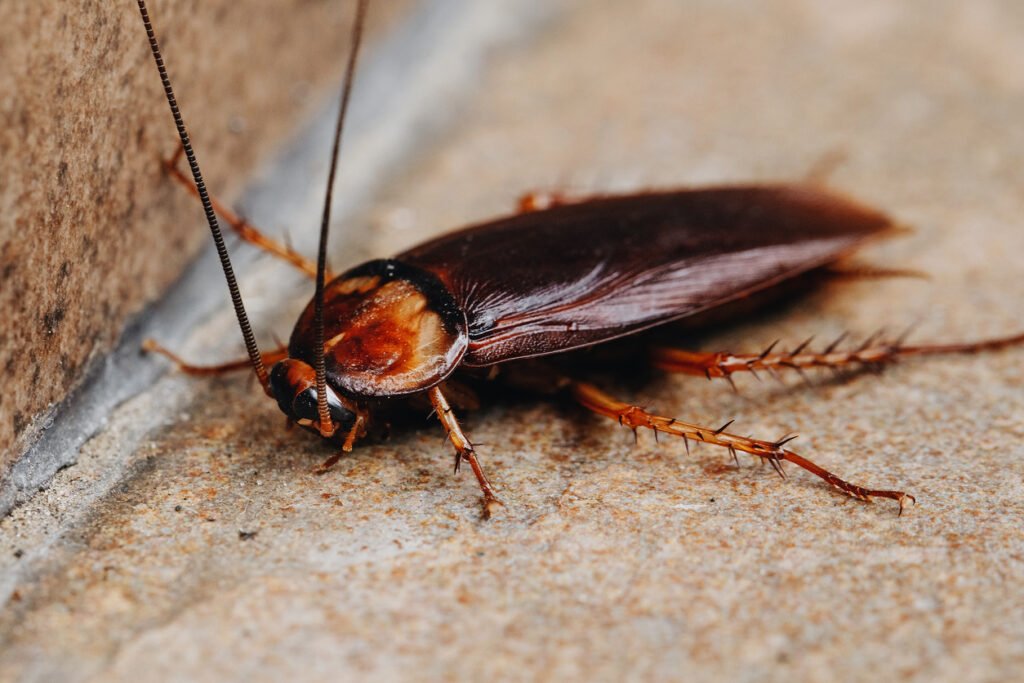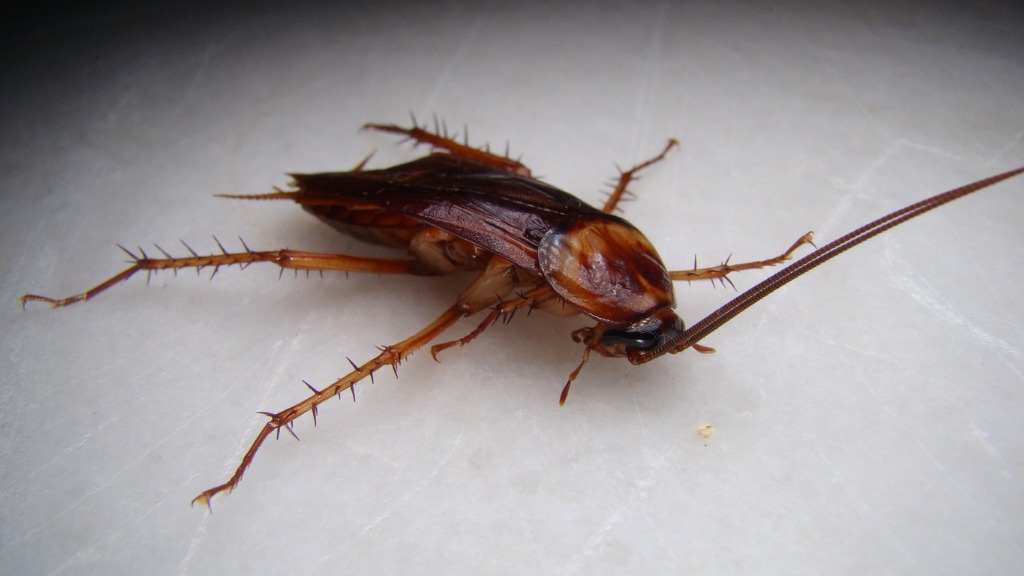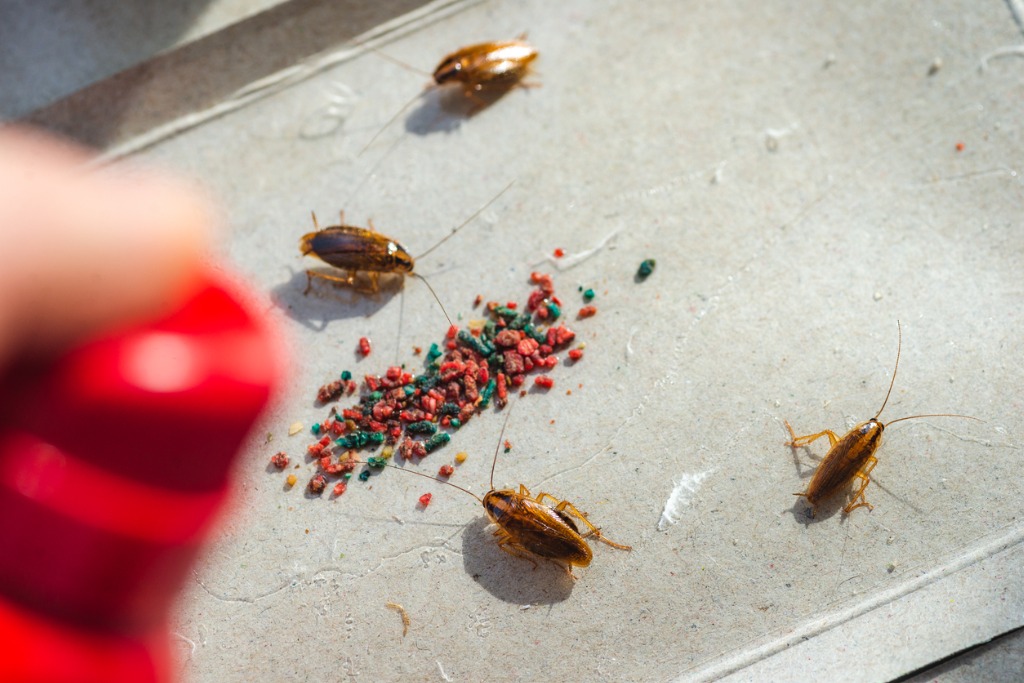We often associate cockroaches with filth and disgust, but what if I told you that their presence in your home could impact more than just your aversion? These unsightly creatures carry a range of health risks that might make you think twice about sharing living quarters with them. In this eye-opening article, we uncover the hidden dangers lurking behind cockroach infestations. From contaminating food surfaces to exacerbating respiratory conditions, it’s time to take an up-close look at how these tiny intruders can wreak havoc on our well-being.
Key takeaways
- Cockroach infestations can pose serious health risks, including respiratory issues, allergies, and gastrointestinal problems.
- Cockroach allergens found in their feces, saliva, and skin can trigger asthma attacks, skin irritations, and other allergic reactions.
- Vulnerable populations such as children, the elderly, and individuals with compromised immune systems are at higher risk.
- Long-term exposure to cockroach infestations can lead to chronic health conditions like asthma and respiratory infections.
- Early detection of infestations is crucial to minimize health hazards and population growth.
- Prevention strategies include maintaining cleanliness, sealing entry points, and seeking professional pest control when needed.
Cockroach-Related Health Issues
Overview of health issues
Cockroach infestations pose significant health issues due to the insects’ potential to carry and transmit various pathogens and allergens. Cockroaches can contaminate food and surfaces with bacteria like Salmonella and E. coli, leading to gastrointestinal problems when ingested. Moreover, their shed skin, feces, and saliva contain allergens that can trigger respiratory issues and skin conditions, particularly in individuals with allergies or asthma. These health concerns underscore the importance of addressing and preventing cockroach infestations to safeguard both physical and respiratory well-being.
Types of diseases and health problems

1. Respiratory problems
Cockroach infestations can exacerbate respiratory problems, particularly in individuals with asthma or other pre-existing conditions. This is primarily attributed to the presence of cockroach allergens, which are found in their feces, saliva, and skin. When these allergens become airborne, they can be inhaled, triggering allergic reactions. Common symptoms include coughing, wheezing, shortness of breath, and chest tightness. Prolonged exposure to cockroach allergens can worsen these symptoms and may even lead to the development of asthma in some cases.
2. Gastrointestinal issues
Cockroaches are known to be carriers of various pathogens, including Salmonella and E. coli, which can contaminate food and surfaces they come into contact with. When humans ingest food or water contaminated by cockroach-borne bacteria, they are at risk of developing gastrointestinal issues. Symptoms may include diarrhea, nausea, vomiting, abdominal pain, and fever. These infections can be particularly dangerous for vulnerable populations, such as young children and the elderly.
3. Allergies and skin conditions
Cockroach allergens are a common trigger for allergies and skin conditions. When cockroach allergens come into contact with the skin, they can cause rashes and other skin irritations, especially in individuals with sensitive skin. In addition, inhalation of these allergens can lead to allergic reactions, such as rhinitis (runny or stuffy nose), conjunctivitis (eye irritation), and dermatitis (skin inflammation). People with pre-existing allergies are more susceptible to these reactions, and prolonged exposure can lead to chronic skin and respiratory problems, significantly affecting one’s quality of life.
Vulnerable Populations
Children
Children are particularly vulnerable to the health risks associated with cockroach infestations. They tend to spend more time on the floor, where allergens and pathogens from cockroaches are often concentrated. Additionally, their immune systems are still developing, making them more susceptible to infections and allergies. Cockroach-related respiratory problems, gastrointestinal issues, and allergies can have a more profound impact on children’s health, leading to missed school days and overall discomfort.
Elderly individuals
Elderly individuals face unique challenges when it comes to cockroach-related health risks. As people age, their immune systems may weaken, making them less capable of fighting off infections. Cockroach allergens can exacerbate existing respiratory conditions, such as chronic obstructive pulmonary disease (COPD) or asthma, which are more prevalent among the elderly. Additionally, mobility issues may limit their ability to maintain a clean living environment or respond quickly to infestations, increasing their exposure to cockroach-related health hazards.
Individuals with compromised immune systems
Those with compromised immune systems, including individuals with HIV/AIDS, cancer patients undergoing chemotherapy, and organ transplant recipients on immunosuppressive medications, are at heightened risk when exposed to cockroach infestations. Their weakened immune responses make them more susceptible to infections transmitted by cockroaches, such as bacterial food poisoning. Furthermore, their immune systems may struggle to manage the inflammatory response triggered by cockroach allergens, potentially leading to more severe respiratory and skin issues. For these individuals, the consequences of cockroach infestations can be especially severe and even life-threatening.
Long-Term Health Effects

1. Asthma
Prolonged exposure to cockroach allergens is strongly linked to the development and exacerbation of asthma, particularly in children. For individuals with asthma, cockroach infestations can trigger more frequent and severe asthma attacks. Over time, this can lead to the development of chronic, uncontrolled asthma, which requires ongoing medical management and can significantly diminish one’s quality of life.
2. Allergies
Cockroach allergens can lead to chronic allergic reactions, such as rhinitis (inflammation of the nasal passages) and conjunctivitis (eye irritation). These persistent symptoms can disrupt daily activities and contribute to a diminished sense of well-being. Individuals with allergies may experience ongoing discomfort, including sneezing, runny or stuffy nose, itchy or watery eyes, and skin irritations.
3. Respiratory infections
Cockroach infestations can increase the risk of respiratory infections over the long term. The presence of allergens and pathogens from cockroaches in the indoor environment can weaken the respiratory system’s defenses. This can make individuals more susceptible to respiratory infections, such as bronchitis and pneumonia, which may become recurrent or chronic in severe cases. Long-term respiratory infections can lead to reduced lung function and overall respiratory health.
Psychological impact
1. Stress and anxiety
- Stress: Stress is a natural response to challenging or threatening situations. It can be both positive (eustress) and negative (distress). However, chronic or excessive stress can lead to a range of psychological and physical health problems. Stress can result from various sources, such as work pressures, financial difficulties, relationship problems, or major life changes.
- Anxiety: Anxiety is a psychological condition characterized by excessive worry, fear, and uneasiness. It can be a normal response to stressors, but when it becomes chronic or severe, it can lead to anxiety disorders. Anxiety can interfere with daily functioning, making it challenging to concentrate, sleep, and engage in social or occupational activities.
- Causes of Stress and Anxiety: Stress and anxiety can be caused by a wide range of factors, including personal circumstances, trauma, genetics, brain chemistry, and environmental stressors. It’s essential to manage stress and anxiety effectively to maintain mental and emotional well-being.
2. Impact on quality of life
- Physical Health: Chronic stress and anxiety can have a detrimental impact on physical health. They are associated with a higher risk of cardiovascular diseases, gastrointestinal problems, and weakened immune function. Prolonged stress can lead to burnout and exhaustion.
- Mental Health: Persistent stress and anxiety can contribute to the development or exacerbation of mental health disorders, such as depression, generalized anxiety disorder, and panic disorder. These conditions can significantly affect a person’s overall quality of life.
- Relationships: High levels of stress and anxiety can strain personal relationships. Individuals experiencing these conditions may have difficulty communicating, be irritable, or withdraw from social interactions, which can negatively affect their connections with others.
- Work and Productivity: Stress and anxiety can impact work performance and productivity. They may lead to absenteeism, decreased concentration, and difficulty making decisions, potentially affecting career advancement.
- Lifestyle: People with chronic stress and anxiety may engage in unhealthy coping mechanisms such as overeating, excessive alcohol or drug use, or smoking. These behaviors can further reduce the quality of life and contribute to physical health problems.
Cockroach Allergens
Identification of allergens
Cockroach allergens are proteins found in the bodies, saliva, feces, and shed exoskeletons of cockroaches that can trigger allergic reactions in susceptible individuals. The primary allergens associated with cockroaches belong to a family of proteins called Bla g and Per a. These allergens can become airborne when cockroach particles break down, and they are commonly found in indoor environments, especially in areas with poor sanitation or infestations.
The main identified cockroach allergens include Bla g 1, Bla g 2, Bla g 4, Per a 1, and a 7. Bla g 1 and Bla g 2 are major allergens produced in the gut and saliva of German cockroaches (Blattella germanica), while Per a 1 and a 7 are major allergens produced in the gut and feces of the American cockroach (Periplaneta americana). These allergens can elicit immune responses when they come into contact with mucous membranes, the respiratory system, or broken skin, leading to allergic symptoms.
Allergen exposure and sensitization
Exposure to cockroach allergens can occur through various routes, and sensitization to these allergens can have adverse health effects, especially in individuals with preexisting allergies or asthma. The following are common scenarios of allergen exposure and sensitization:
- Respiratory Exposure: Inhalation of airborne cockroach allergens is a significant route of exposure. When allergen particles become airborne, individuals can breathe them in, leading to sensitization. This exposure can exacerbate asthma symptoms or trigger asthma attacks in individuals with asthma.
- Contact Exposure: Direct contact with cockroach allergens, such as through skin contact with contaminated surfaces or handling cockroaches, can lead to sensitization. People working in environments with high cockroach infestations may be at risk.
- Ingestion: Ingesting food or beverages contaminated with cockroach allergens can also lead to sensitization, although this route is less common compared to respiratory exposure.
Recognizing Signs of Infestation

Common indicators of a cockroach infestation
Cockroaches are nocturnal pests that tend to hide during the day and emerge at night to search for food and water. Recognizing the signs of a cockroach infestation is crucial for early intervention and pest control. Some common indicators of a cockroach infestation include:
- Droppings: Cockroach droppings look like small, dark, cylindrical pellets, often compared to coffee grounds or black pepper. You may find these droppings in areas where cockroaches are active, such as kitchen cabinets, pantries, or behind appliances.
- Odor: Cockroaches emit a musty, unpleasant odor that can become noticeable in areas with a heavy infestation. This odor is often described as oily or musky.
- Live Cockroaches: Spotting live cockroaches, especially in the kitchen or bathroom, is a clear sign of infestation. They typically hide in cracks, crevices, and warm, damp areas.
- Egg Casings: Cockroach egg cases, known as oothecae, are small, brown, and capsule-shaped. These casings can be found in hidden locations like behind appliances, in wall voids, or under sinks.
- Shed Skin: As cockroaches grow, they shed their exoskeletons. Finding these translucent, shell-like structures in your home is another sign of an infestation.
- Damage to Paper and Packaging: Cockroaches are known to chew on paper products, cardboard, and food packaging. Look for small holes or damage to these materials.
- Gnaw Marks: Cockroaches may leave gnaw marks on various materials, including books, fabrics, and even electrical wires.
- Noise: In some cases, you may hear rustling or scuttling sounds, particularly at night, when cockroaches are most active.
Importance of early detection
Early detection of a cockroach infestation is crucial for several reasons:
- Health Risks: Cockroaches can carry disease-causing pathogens on their bodies and in their feces. Their presence can pose health risks, especially for individuals with allergies, asthma, or compromised immune systems. Early detection and eradication can help minimize these health hazards.
- Prevent Population Growth: Cockroaches reproduce rapidly, and a small infestation can quickly become a large one. Early detection allows for prompt intervention, preventing the population from growing and making eradication easier.
- Reduced Damage: Cockroaches can damage food products, contaminate surfaces, and cause structural damage over time. Detecting the infestation early can help minimize these types of damage and associated costs.
- Avoiding Pest Spread: Cockroaches can easily spread to neighboring properties if left unchecked. Early detection and treatment can prevent the infestation from spreading to other homes or apartments.
- Peace of Mind: Knowing that your home is free from cockroach infestations contributes to peace of mind and a better quality of life.
Prevention and Intervention
Strategies for preventing infestations
Preventing infestations is essential to maintain a healthy and comfortable living environment. One of the primary strategies for prevention is to maintain cleanliness and good hygiene practices. Regularly clean and sanitize your home, paying special attention to areas prone to infestations, such as the kitchen and bathroom. Keep food stored in airtight containers to deter pests like ants and rodents. Fix any plumbing leaks promptly, as stagnant water can attract insects like mosquitoes and cockroaches. Additionally, ensure that your home is well-sealed, with no gaps or cracks in doors, windows, or walls, as these can serve as entry points for pests. Regularly inspect and maintain your garden or outdoor spaces to prevent pests from nesting in your yard.
Steps to take if infestation is suspected
If you suspect an infestation, it’s crucial to act swiftly. First, identify the signs of infestation, which may include unusual droppings, strange odors, damaged property, or visible pests. Isolate the affected area to prevent the infestation from spreading further. Consult reputable online resources or contact a local pest control authority for guidance on identifying the specific pest and its habits. Remove any sources of food, water, or shelter that may be attracting the pests. In some cases, you can use DIY methods like traps or baits, but for serious infestations or if you are unsure about the pest, it’s advisable to seek professional help.
Professional pest control options
When dealing with a persistent or severe infestation, or if you want to ensure thorough and safe eradication, professional pest control services are often the best option. Pest control professionals have the expertise and tools necessary to assess the situation accurately and implement effective solutions. They may use a variety of methods, including chemical treatments, traps, and preventive measures to eliminate pests and prevent future infestations. It’s essential to choose a licensed and reputable pest control company to ensure the safety of your family and pets. Regular inspections and preventive measures can also be part of a professional pest control plan to maintain a pest-free environment.
Conclusion
Cockroach infestations pose serious health risks to humans. These resilient creatures can carry and spread various pathogens, leading to respiratory problems, allergies, and even foodborne illnesses. The presence of cockroaches in homes or businesses should not be taken lightly, as their droppings and shed skin can trigger asthma attacks and allergic reactions. It is crucial to address and eliminate any cockroach infestations promptly through professional pest control services and proper sanitation practices. By doing so, we can protect our health and ensure a safer living environment for ourselves and our loved ones. Don’t wait until the problem escalates – take action now to safeguard your well-being from the hazards associated with cockroach infestations.
FAQs
1. How do cockroach infestations pose health risks?
Cockroach infestations can pose significant health risks due to the allergens they produce, the bacteria they carry, and the potential for disease transmission. When roaches infest a home, they leave behind droppings and shed skin and saliva that can trigger allergies and asthma in susceptible individuals.
2. What health problems can be caused by cockroach allergens?
Cockroach allergens can exacerbate respiratory issues, especially in children and individuals with asthma or allergies. They can lead to symptoms such as coughing, wheezing, congestion, skin rashes, and eye irritation.
3. Can cockroaches spread diseases?
Yes, cockroaches can carry bacteria, including E. coli and Salmonella, on their bodies and in their excrement. When they come into contact with food, utensils, or food preparation surfaces, they can transfer these harmful pathogens, potentially causing foodborne illnesses.
4. Are there specific diseases associated with cockroach infestations?
While cockroaches are not direct vectors for diseases like mosquitoes or ticks, their presence can contribute to the spread of illnesses indirectly. For example, they can contaminate food and surfaces, increasing the risk of foodborne illnesses.
5. Who is most at risk from cockroach-related health issues?
Vulnerable populations, such as children, the elderly, and individuals with compromised immune systems or respiratory conditions, are at higher risk for health problems caused by cockroach infestations.

